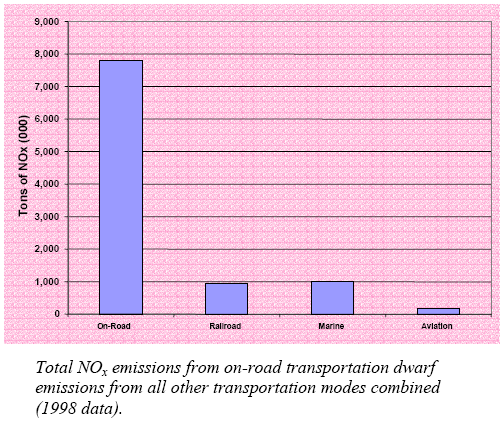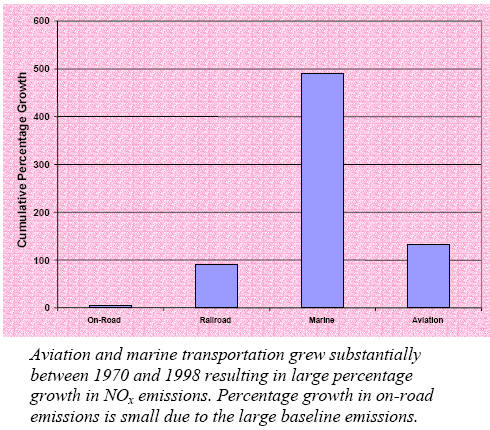
 |
|
|
|
||||
|
How Do Aviation Local Emissions Compare To Other Transportation Sources? |
||||
 |
Aviation has grown faster than other modes of transportation and is expected to outpace them in the future. Despite this growth, aviationís contribution to local air quality inventories compared to other transportation sources has remained modest. For example, as the chart shows, the rate of growth in aviation NOx emissions has far outpaced on-road (i.e., cars and trucks) NOx emissions growth. However, as the next chart shows, the quantity of emissions of other transport modes far exceeds aviationís NOx contribution. This is not surprising as most of an aircraftís operations take place at altitude where emissions do not affect local air quality. This is in contrast to cars and trucks that primarily operate within a single air quality region and always at ground level. In the future, NOx emissions from on-road vehicles should fall in response to the most recent environmental regulations. Aircraft, on the other hand, will be challenged to reduce their total NOx emissions. However, even if the other sources were able to reduce their emissions by half, a highly unlikely occurrence, aviation NOx emissions would still be less than 3 percent of the transportation NOx inventory by 2020. Nonetheless, pressure on aviation sources will likely remain as many states and localities will face the twin challenges of meeting new ozone and particulate matter standards at the same time non-aviation source reductions become more difficult and costly. |
|||
 |
||||
|
||||
| ©AvStop Online Magazine Contact Us Return To News | ||||